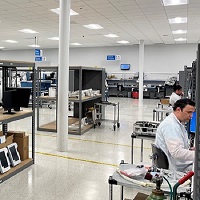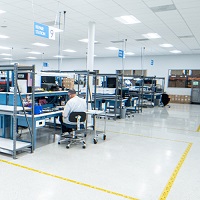
Not a 3rd Wheel! How to Maintain Your Image, Voice, and Service Standard When Contracting Third-Party Partners
Every Original Equipment Manufacturer (OEM) has several concurrent, ongoing concerns when their products are out with customers. They must ensure their product reliably performs as promised and serves its role within the customer’s ecosystem. OEMs must also be prepared for what happens when their product inevitably needs repairs. When complications arise, companies must get their product serviced and up and running as soon as possible, with a minimal adverse effect on the customer, ensuring their brand reputation remains untarnished.
OEMs can achieve minimal downtime on their product by employing a fleet of field service engineers trained in their products’ maintenance. Maintaining a skilled workforce is expensive and not something all OEMs can budget for in their annual operating plans. The costs of keeping field services in-house are increasing as labor shortages and inflation continue to drive up prices.
Consequently, many OEMs are looking to third-party partners to help them ensure a positive customer experience. Despite the benefits of establishing a partnership with a third-party service partner, there may still be some lingering concerns for OEMs.
This topic arose at the recent San Diego, California Field Services Medical 2023 conference.
Pasha Arshadi, Vice President of Global Service Solutions at Quest International, spoke on a panel with two OEM representatives entitled “Not a 3rd Wheel! How to Maintain Your Image, Voice, and Service Standard When Contracting Third Party Partners.”
The panel discussed why OEMs need not be afraid of third-party partners like Quest; how there are many ways a third-party support partner can act on behalf of the OEM to enhance the customer experience. “Third-party partners take on the burden of preventive maintenance and free up bandwidth for the OEM to work on more critical issues and the customer relationship,” said Arshadi. Third-party partners can provide quality work with a fast turnaround time, and many offer end-to-end technical services such as depot repair, warehousing logistics, and customer care solutions, saving the OEM even more time and money while maximizing uptime.
The conversation also addressed how the right third-party support partner can be an extension of the OEM’s brand and enhance the overall customer experience by delivering support services at scale. “If we are talking about brand protection – [third parties] can help when OEMs do not have the resources to go and handle issues that can negatively impact the brand,” said Arshadi. Instead, third-party service providers help the OEM “focus on things that are helping to shape the customer experience instead of the execution of repairs.”
Helping achieve business continuity is another selling point for third parties, as they can help ensure that customers experience as little downtime as possible. “We provide business continuity by always having at least two techs trained on OEM’s products so they can back each other up,” said Arshadi. This peace of mind allows the organization to work harder at innovating and differentiating instead of answering field calls.
Leaning on third parties for best practices can significantly improve an OEM’s approach to service. Third parties are a source of expertise in field operations, which the OEM can use to improve their systems. “We are constantly getting different types of feedback because we work with so many different OEMs,” said Arshadi. “We get feedback about where we can make enhancements and what types of changes we can make. We have made all those changes because it serves our customers better.”
How can OEMs ensure that their partners act according to their expectations? By having an ironclad agreement upfront, said Arshadi. “There are SLAs and KPIs that are looked at objectively and drafted into the agreement. It is easy to measure through monthly or quarterly business reviews whether a third party is meeting the expectations of the OEM.”
The best way to manage performance from a third party is to “Have an open discussion and share whether we are meeting the OEM’s or the end customers’ expectations,” said Arshadi. It is best practice to “send NPS surveys to both OEM’s end customers and Quest field service techs to ensure there is an open dialogue and sharing of information.”
Choosing a partner in the early stages of commercialization can help new companies grow sustainably, with an experienced partner to help them along. In one such instance, Quest created a Master Training program to help get more technicians into the field quickly. This allowed the OEM to “scale additional resources throughout the lifetime of the project,” and Quest has been “growing their territory by training reps and sending them out into the field,” said Arshadi.
Ultimately, the relationship between the OEM and third-party support provider is a partnership where both sides want to see the other succeed. OEMs want happy customers, and service partners want the OEM to grow their business and expand their territory. It can be a perfect marriage with proper communication and expectations.
Watch a video of all of Pasha’s comments here. For more information on Quest’s field services offerings for healthcare OEMs, click here. Get in touch and start a discussion on how Quest can improve your customer experience by contacting us.
MAR-955 REV 1.0











